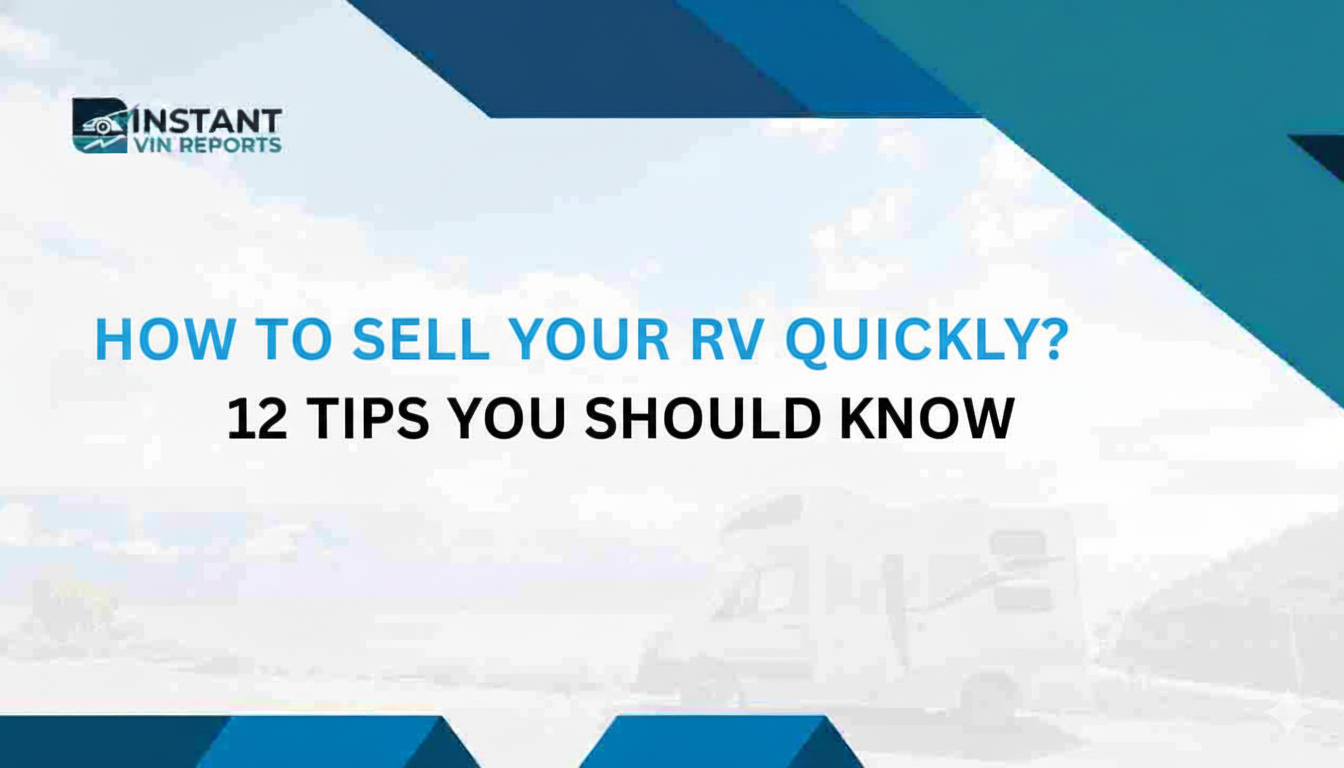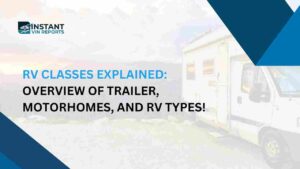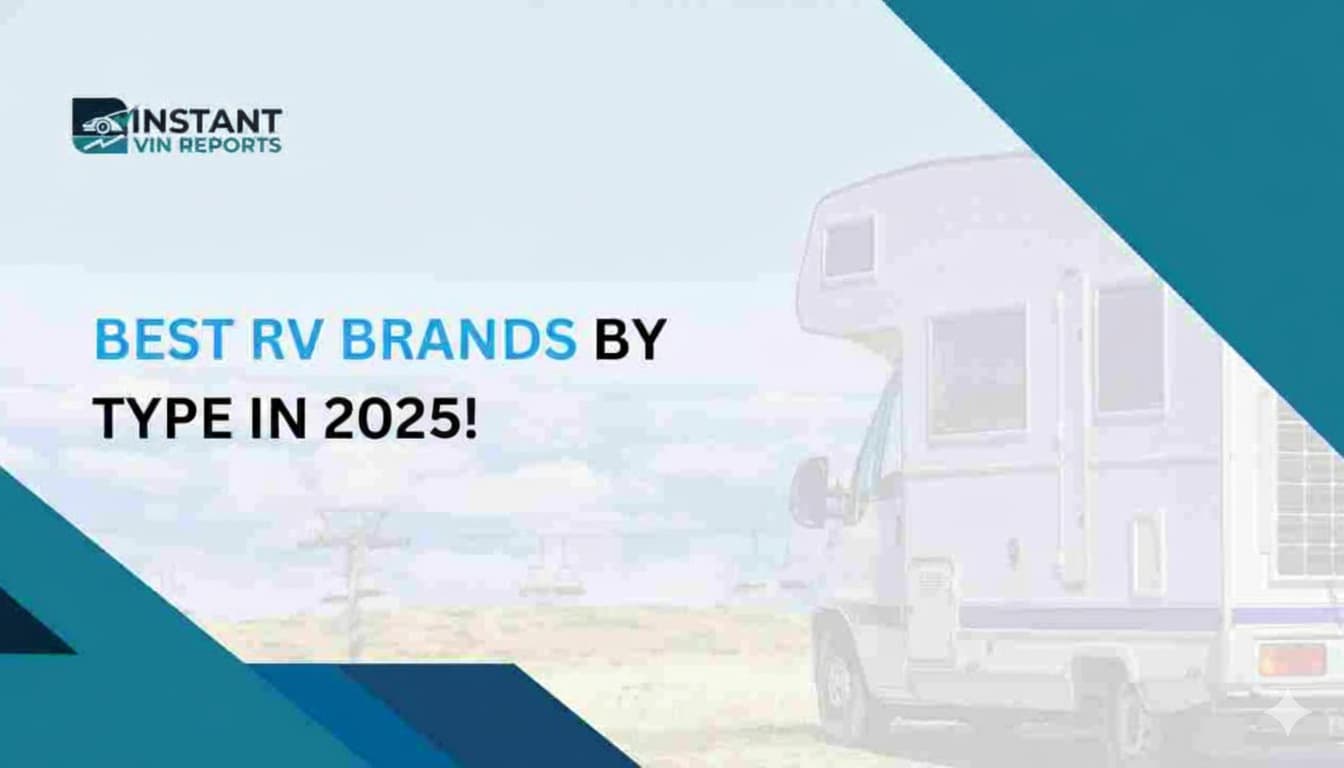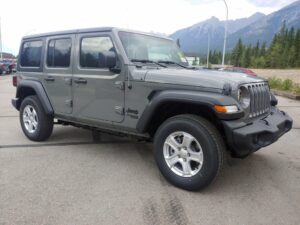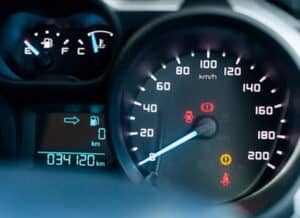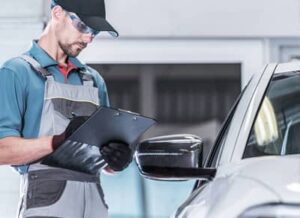For some people, buying a used recreational vehicle (RV) is a good way to save money on travel. However, before purchasing a used RV, paying attention to the vehicle’s details is crucial to avoid buying an RV with accident history, being scammed, or facing costly repair fees. To save time, we’ve provided a list of items to check before buying a used RV.
What You Need to Look for When Buying a Used RV
Before you decide to buy a used RV, look around carefully to inspect any damage that could be seen. You should also perform an RV VIN number lookup to uncover the history and hidden records of theft, accidents, and more.
Here are the things you should pay more attention to during the inspection process.
Inspect the Roof for Damage
Even minor roof damage can significantly impact the comfort of your RV. Leaks can allow dirty water and debris to enter, leading to water damage and mold growth, making the interior look unappealing. It’s a good idea to do a self-check to spot any potential issues with the roof, including signs of leaks or cracks. Pay special attention to critical areas like caulking, sealants, and gutters.
If unsure, consider hiring a professional mechanic for a thorough inspection. The mechanic should check the air conditioning and ensure the waterproof seals are intact to prevent leaks.
Read Also: How to Check the VIN Number on a Camper
Evaluate the Tires for Wear and Tear
When inspecting an RV, don’t just focus on the interior. It’s equally important to examine the tires, as they are a vital component of the vehicle. Assessing tire wear and tear can help you spot potential issues that might lead to expensive repairs. Take the time to carefully check the tires to ensure you’re not buying an RV with damaged tires, which could affect its performance, functionality, and overall lifespan, especially if the previous owner didn’t keep up with maintenance.
Examine the Interior and Exterior Walls
The interior is the most critical space for the driver and passenger to rest. If there’s any unusual smell in the interior area, be aware of it. It might be a sign of overall damage to the vehicle and that it is being neglected and mistreated beyond repair.
Additionally, examine the exterior wall closely for signs of corrosion, peeling, or cracks. If the RV isn’t appropriately handled or has ever been involved in an accident, the exterior wall may experience delamination. Gently pressing the wall to check for soft spots indicating rot, sagging, or water damage is helpful. Walking on uneven surfaces like the carpet and investigating what’s behind them is also good.
Delamination repair expenses can be steep, so scrutinizing the exterior is wise to prevent this financial strain.
Assess the Condition of the Floors
Living in a place with a gross floor is not ideal. Inspect the RV’s living room floor to see if anything is leaked or crooked. Simply walk with a thin slipper to feel what’s wrong, correct the floor condition, and sense if there’s an uneven area.
Also, it’s important to remember to check what’s behind the rugs; we never know what the previous owner has done.
Put the Appliances to the Test
In addition to inspecting the RV’s floor condition, remember to test the appliances. Turn on and test each one, such as the stove, refrigerator, microwave, and oven, to see if they work correctly.
This step is just as important as the other steps to ensure the vehicle’s safety. Hence, check and make sure that all of the appliances are working properly before you decide to buy the RV because faulty appliances can lead to costly repairs and high safety issues.
Check the HVAC System’s Functionality
Heating, ventilation, and air conditioning (HVAC) is a technology that controls the temperature, humidity, and air purity in a closed space to set thermal goals and provide acceptable indoor air quality.
An RV is an enclosed space; be sure to check the functionality of the HVAC technology to ensure that the heating system, ventilation, and air conditioning are effectively functioning. Ensure that those technologies are heating and cooling the RV’s cabin and not making unusual noises.
Inspect Plumbing and Holding Tanks
Test the plumbing by running water into the system to check for leaks and ensure that the drainage system is working correctly and not clogged by unusual things. Furthermore, the condition of the holding tanks must be inspected, and abnormal noises that could damage the RV must be listened to.
A handy tip is to ask the RV owner whether the vehicle has been properly winterized. This can help protect the pipes from cold weather.
Ensure the Water Heater is Operational
Begin by turning on and running the water heater to check if it’s functioning properly. Then, the taps should be constantly used to observe if the water temperature rises as expected. While the water is running, look closely at the pipe to see if there are any leaks around the heater. Pay attention to distinctive noises, such as banging or hissing, that might indicate an issue inside the heater.
Also, carefully inspect the heater’s safety machine, like the pressure relief valve, to confirm if it is functioning correctly and if no corrosion is visible. Regular water heater testing helps prevent unexpected problems and ensures it runs efficiently when needed.
Verify Lights and Electrical Systems
Checking the lights and electrical system in a used vehicle or RV is important and cannot be skipped. It ensures everything works properly. Start by testing the lights from the inside and outside, turning them one by one to see if they are working as expected. In addition to the interior lights, remember to check the signal, brake, and headlights.
Next, to ensure the electrical system is working, plug in a small device, like charging your phone, into the RV’s socket to assess whether it gives power to the device. After that, inspect the RV’s battery power to see if it’s fully charged. Be sure to look for any sign of corrosion at the battery terminal, as this could be a problem later. Finally, if the RV has a generator, start it up to confirm it runs smoothly and powers the system correctly.
Conclusion
Buying a used RV can be challenging, but it is also a good way to save money. To ensure everything works properly, it is essential to check everything, including the electronic system, interior and exterior, and the appliances installed on the RV.
While a physical inspection is essential, it’s not enough to reveal any hidden damage or whether the RV has a lien or theft records. Be sure to perform an RV VIN lookup to get a full report of the RV’s history and condition to prevent scams and costly future repairs.
Frequently Asked Questions
What is the average cost of an RV inspection?
A smaller motorhome inspection will cost you roughly $150 for the mechanical system only. If you want to check the interior and exterior, you must pay around $350.
Is it illegal to walk around an RV while driving?
If you are in a state where the passengers are required to put on a seatbelt while the vehicle is moving, you are not allowed to walk around the RV when it’s on the road.
How long can you legally live in the RV?
California’s RV residency laws are relaxed, allowing indefinite stays with responsible behavior, while public lands limit parking to 14 days without a permit.



